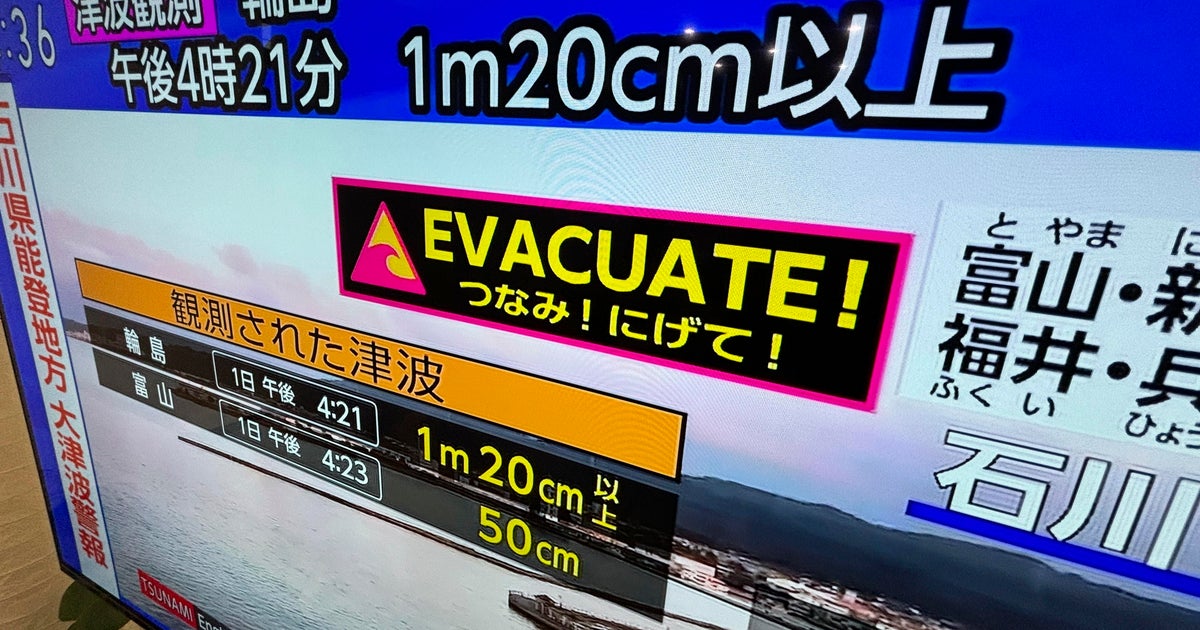A series of powerful earthquakes off central Japan's west coast triggered tsunami warnings on Monday and residents were urged to seek higher ground. The Japan Meteorological Agency (JMA) said the Noto region, on the western side of Japan's main island of Honshu, was hit by a total of about 20 earthquakes, starting with a magnitude 5.7 earthquake at 4:06 p.m. local time. .
It was followed four minutes later by a magnitude 7.6 earthquake, followed by magnitude 6.1 at 4:18 pm, magnitude 4.5 at 4:23 pm, magnitude 4.6 at 4:29 pm, and magnitude 4.8 at 4:29 pm. Earthquake at 4:32 p.m.
Eugene Hoshiko/AP
The first tsunami waves, about four feet high, hit the port of Wajima in Ishikawa Prefecture an hour after the quakes hit, and there were warnings that another 16-foot tsunami could hit Ishikawa.
Presenters on national broadcaster NHK urged people in the region to drop everything and quickly move to higher ground.
“The dangerous tsunami waves from this earthquake are 300 km [about 186 miles] The epicenter of the earthquake was off the coast of Japan,” the Hawaii-based Pacific Tsunami Warning Center said, while the Japan Meteorological Agency warned of waves up to five meters high.
US Geological Survey
Power companies that operate nuclear power plants in the region said they were checking for irregularities, but said there were no immediate problems, and the government later appeared to ensure the safety of the plants.
“It has been confirmed that there are no abnormalities at Shiga Nuclear Power Plant [in Ishikawa] and other stations are currently available,” national government spokesman Hayashi Yoshimasa said, according to AFP news agency.
The earthquakes caused damage, however, as video broadcast by NHK showed buildings collapsing in Ishikawa. On the other side of Japan, the network said buildings were all shaken in the capital Tokyo, and Yoshimasa said authorities were still checking the extent of damage in affected areas to the west.
More than 36,000 homes in Ishikawa and Toyama prefectures were without power, Reuters news agency reported, citing utility provider Hokuriku Electric Power.
A big one On March 11, 2011, an earthquake and tsunami struck northeastern JapanIt devastated much of the country's coastline and fueled a nuclear meltdown at Fukushima.

